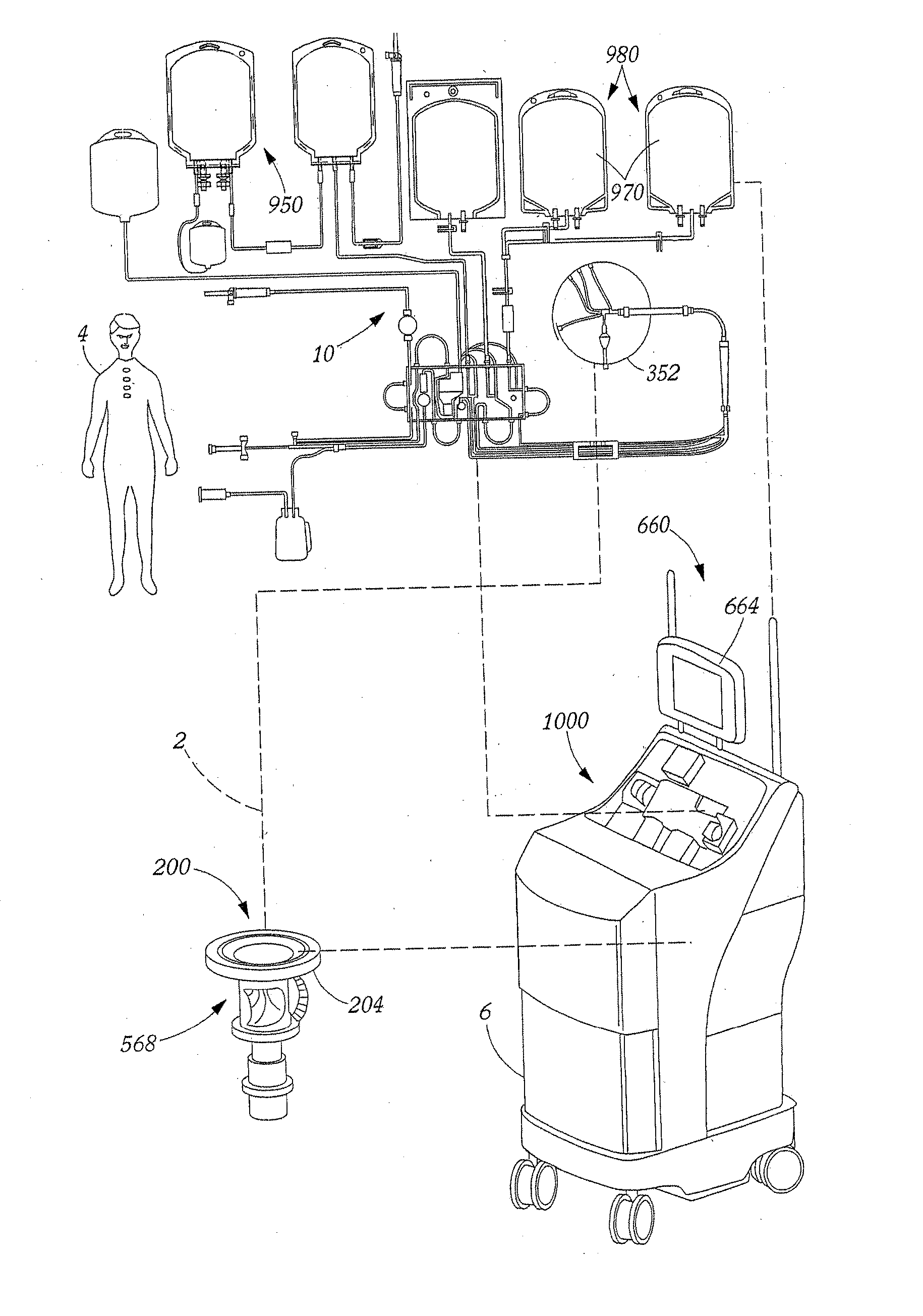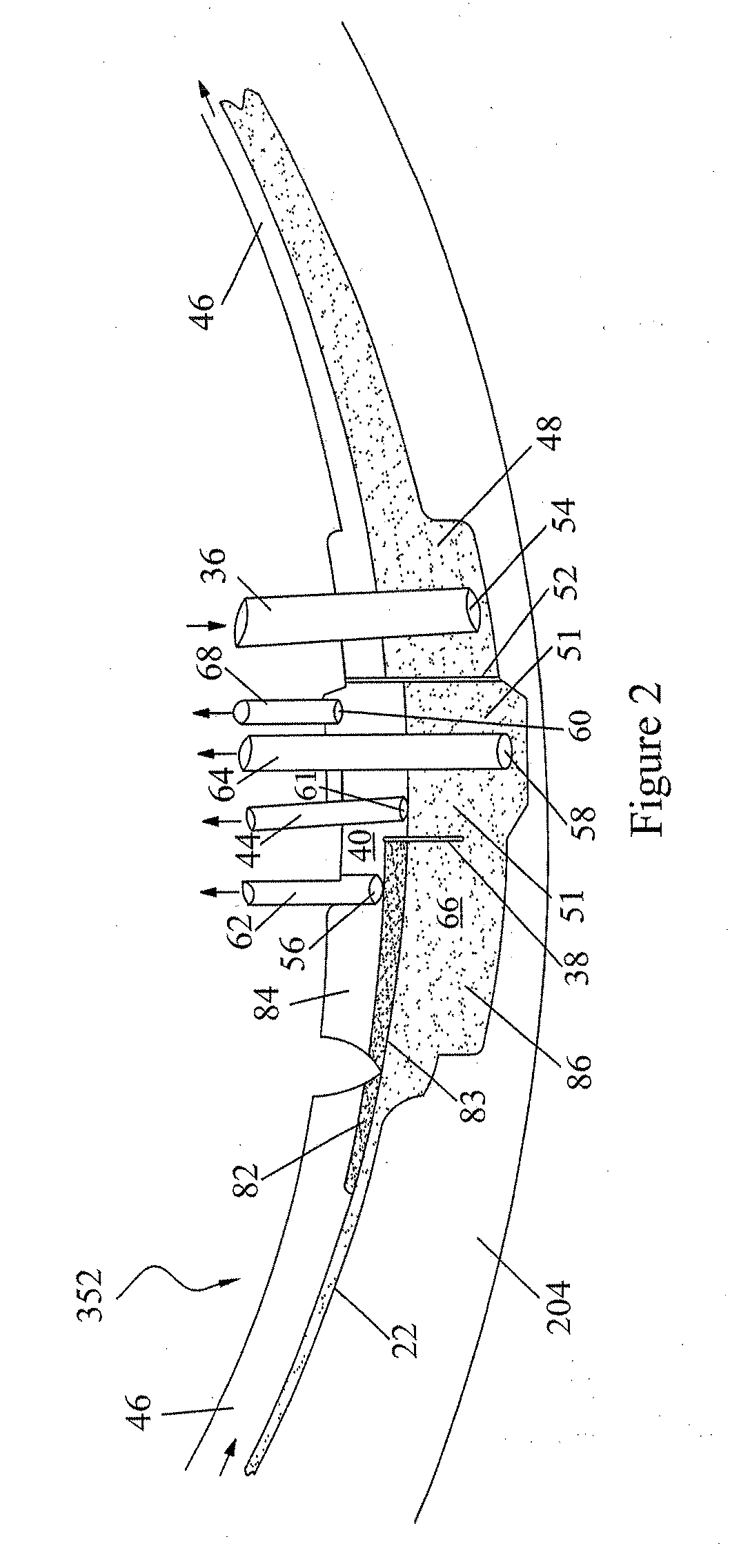Method and Apparatus for Leukoreduction of Red Blood Cells
a technology of red blood cells and leukoreduction method, which is applied in the field of extracorporeal blood processing methods, can solve the problems of contaminating white blood cells, affecting the final recipient of the collected blood component, and affecting the leukoreduction effect of red blood cells,
- Summary
- Abstract
- Description
- Claims
- Application Information
AI Technical Summary
Benefits of technology
Problems solved by technology
Method used
Image
Examples
Embodiment Construction
[0024] The present invention will be described in relation to the accompanying drawings which assist in illustrating the pertinent features hereof. Generally, the primary aspects of the present invention relate to both procedural and structural improvements in or a sub-assembly for use with a blood apheresis system. However, certain of these improvements may be applicable to other extracorporeal blood processing applications whether any blood components are returned directly to the donor or otherwise; and such are within the scope of the present invention as well.
[0025] It should be noted that like elements are depicted by like numbers.
[0026] A preferred blood apheresis system 2 for use in and / or with the present invention is schematically illustrated in FIG. 1. System 2 provides for a continuous blood component separation process. Generally, whole blood is withdrawn from a donor 4 and is substantially continuously provided to a blood component separation device 6 where the blood ...
PUM
 Login to View More
Login to View More Abstract
Description
Claims
Application Information
 Login to View More
Login to View More - R&D
- Intellectual Property
- Life Sciences
- Materials
- Tech Scout
- Unparalleled Data Quality
- Higher Quality Content
- 60% Fewer Hallucinations
Browse by: Latest US Patents, China's latest patents, Technical Efficacy Thesaurus, Application Domain, Technology Topic, Popular Technical Reports.
© 2025 PatSnap. All rights reserved.Legal|Privacy policy|Modern Slavery Act Transparency Statement|Sitemap|About US| Contact US: help@patsnap.com



